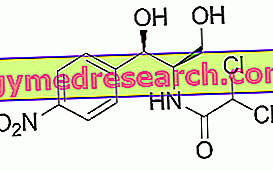What are simple sugars?
The main carbohydrates of food interest are commonly divided into simple and complex; the former are also known as simple sugars, when in reality it would be more correct to call them simple carbohydrates or only sugars.

Simple sugars can be classified as available, ie usable by the body, and not available, ie not digestible, absorbable and metabolizable (for example lactulose, xylose, xylitol, mannitol and sorbitol). Most of the simple sugars of food origin are available and cariogenic (they cause tooth decay). Therefore a diet characterized by a reduced consumption of simple sugars (saccharose so to speak that we put in the cappuccino and in the cream) is useful but it is not decisive in the prevention of dental caries, since complex sugars, then degraded by saliva into highly simple sugars nutrients for plaque, are present in almost all foods (pasta, rice, potatoes, bread etc) ..
The simple sugars can also be classified in relation to the chemical structure: based on the number of carbon atoms that compose them, they are divided into trioses (3 carbon atoms), tetrosis, pentoses and hexoses (6 carbon atoms), while in base to the functional group they are divided into aldoses (CHO) and ketosis (CO).
In-depth articles on some simple sugars:
| Dextrose or Glucose | Fructose | Maltose | Lactose |
| galactose | Disaccharides | lactulose | lactitol |
Simple sugars in the diet
The intake of simple sugars should not exceed 10-12 percent of the daily energy; therefore, in a 2500 Kcal diet, these nutrients should not be consumed in excess of 60 to 75 grams per day. This dietary rule is based on the consideration that, by virtue of its rapid absorption, simple sugars are able to sharply elevate blood sugar levels with pancreatic fatigue. This gland, in fact, is forced to produce and release into circulation large amounts of insulin to cope with hyperglycemia (excessive concentration of glucose in the blood); in turn, the massive release of this hormone leads to a sharp drop in blood sugar (see reactive hypoglycemia), which represents a powerful stimulus to the appearance of the sense of hunger. In practice, therefore, simple sugars taken in large quantities are absorbed so quickly that the individual feels hunger even before the body has had the opportunity to use them for energy purposes. Consequently, given the wide availability of food, the subject is predisposed to ingest large quantities of simple sugars again, ending up with more calories than it consumes. The inevitable result is overweight, with all the negative consequences of the case; furthermore, even in the short term, glycemic swings are harmful, as they cause drowsiness and a decrease in concentration and intellectual performance.
The main sources of simple sugars are carbonated soft drinks, sweets, fruit juices, table sugar, honey and some types of fruit (candied fruit, figs, grapes, chestnuts, dates and dried fruit intended as dehydrated fruit, like raisins, and not as dried nuts, like nuts and hazelnuts). Hanging up again with the glycemic repercussions of simple sugars, we must make a necessary clarification on refined and unrefined sugars. The former are obtained by extraction and purification from plant sources such as cane or beet; white table sugar is the most classic example. All these simple carbohydrates, widely used in the confectionery industry (they are added to pastas, fizzy drinks and various sweets), bring "empty" calories: the food, in fact, contains only energy and is devoid of the very important non-energy component (fibers, minerals and micronutrients in general). On the contrary, the unrefined simple sugars of sugary fruit are accompanied by a myriad of antioxidants and soluble fibers, which slow down their absorption in the intestine; consequently, for the same weight, the postprandial glycemic peak is more limited.



